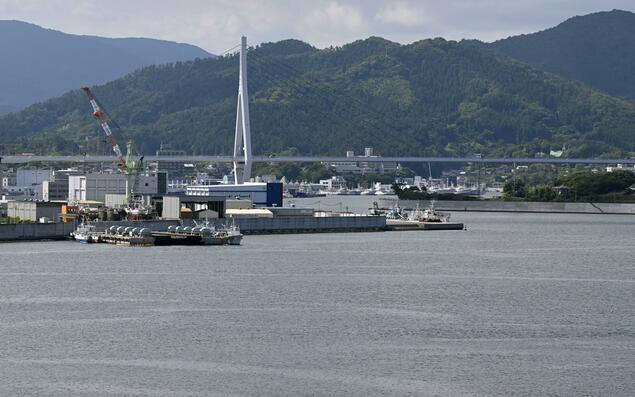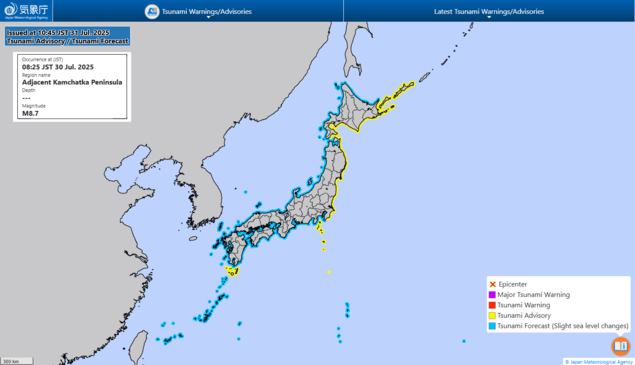TOKYO – Japan on Thursday lifted its last remaining tsunami advisories issued after the previous day’s magnitude 8.8 earthquake off Russia’s Kamchatka Peninsula, with only minimal damage seen from waves that reached the country’s Pacific shores.
The massive quake that struck at 8:24 a.m. Japan time on Wednesday prompted the Japan Meteorological Agency to send out tsunami warnings for coastal areas from Hokkaido in northern Japan to Wakayama Prefecture in the west, at one point affecting some 2 million people with evacuation orders.
The warnings were downgraded to advisories Wednesday night. While tsunami waves continued to arrive, the agency decided to lift all the remaining advisories after determining the risk of further larger waves had subsided.
Still, the agency warned of possible changes in sea levels by around Friday and urged the public to remain attentive to tsunami, with an official saying a quake as strong as the one off Russia’s Far East may occur again.

Photo taken on July 31, 2025, shows cityscape as seen from Oshima Island in Kesennuma, Miyagi Prefecture. (Kyodo)
Advisories covering areas from Kanagawa Prefecture to Okinawa in the south were lifted Thursday morning, followed by those affecting the Pacific coasts of Hokkaido and northeastern Japan, Ibaraki and Chiba prefectures as well as Izu Islands south of Tokyo and Kagoshima Prefecture’s Tanegashima Island and Yakushima Island.
At least 15 locations saw waves reach their peak height on Thursday, with Tokachi Port in Hokkaido and Oarai in Ibaraki Prefecture seeing tsunami as high as 70 centimeters.
The highest tsunami seen after the quake was a 1.3-meter wave observed at Kuji Port in Iwate Prefecture on Wednesday afternoon.
After the tsunami warnings were issued, a woman in her 50s in Mie Prefecture died while trying to evacuate, and 10 sustained injuries, according to the Japanese top government spokesman. Eleven evacuees were taken to hospital after they fell ill due to the high summer temperatures.
Some railway operations continued to be disrupted, with JR Hokkaido suspending services from the first train on some sections, while some residents on Hokkaido spent the night at evacuation centers.
Kayoko Nakajima, 76, was one of around a dozen people who sought refuge at a municipal office in Kushiro, Hokkaido.
“The floor was hard and cold, and I couldn’t sleep well due to the noise,” she recalled.

Source: Japan Meteorological Agency


AloJapan.com